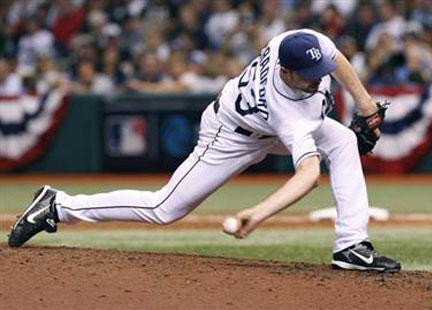Elbow pain is a common complaint that we see at Back to Function. Elbow pain may originate in the joint itself, or from any of the many surrounding muscles, ligaments, tendons and fascia. Elbow pain usually worsens with activities or movement of your arm or wrist.
Anatomy of the elbow joint
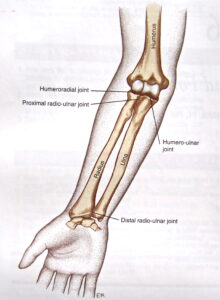 The humerus (upper arm bone), ulna and radius (2 forearm bones) and surrounding soft tissues make up the elbow. Ligaments and surrounding musculature contribute to elbow joint mobility and stability. Fascia is the connective tissue that surrounds all the other soft tissues and allows them to work as an integrated unit.
The humerus (upper arm bone), ulna and radius (2 forearm bones) and surrounding soft tissues make up the elbow. Ligaments and surrounding musculature contribute to elbow joint mobility and stability. Fascia is the connective tissue that surrounds all the other soft tissues and allows them to work as an integrated unit.
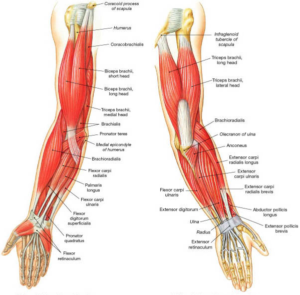
At Back to Function we use a postural approach to evaluating musculoskeletal elbow pain. Three of the most common elbow overuse issues we see are tennis elbow, golfer’s elbow and posterior impingement.
Tennis Elbow
Tennis elbow, medically referred to as lateral epicondylitis, is a painful condition of the elbow caused by overuse. Not surprisingly, playing tennis or other racquet sports can cause this condition. However, several other sports and activities can also put you at risk.
Tennis Elbow Symptoms
 The symptoms of tennis elbow develop gradually. In most cases, the pain begins as mild and slowly worsens over weeks and months. There is usually no specific injury associated with the start of symptoms.
The symptoms of tennis elbow develop gradually. In most cases, the pain begins as mild and slowly worsens over weeks and months. There is usually no specific injury associated with the start of symptoms.
Common signs and symptoms of tennis elbow include:
- pain or burning on the outer part of your elbow
- weak grip strength
The symptoms are often worsened with forearm activity, such as holding a racquet, turning a wrench, or shaking hands, usually in your dominant arm.
Tennis Elbow Causes
Tennis elbow is inflammation or, in some cases, microtearing of the tendons that join the forearm muscles to the outside of the elbow. The forearm muscles and tendons become damaged from overuse — repeating the same motions again and again. This leads to pain and tenderness on the outside of the elbow.
Tennis elbow is often due to damage to a specific forearm muscle called the extensor carpi radialis brevis (ECRB). The ECRB muscle helps stabilize the wrist when the elbow is straight. This occurs during a tennis groundstroke, for example. When the ECRB is weakened from overuse, microscopic tears form in the tendon where it attaches to the lateral epicondyle. This leads to inflammation and pain. The ECRB may also be at increased risk for damage because of its position. As the elbow bends and straightens, the muscle rubs against bony bumps. This can cause gradual wear and tear of the muscle over time.
Who Gets Tennis Elbow?
- painters
- plumbers
- carpenters
- auto workers
- cooks
- butchers
- weight lifters
- nurses
- golfers
- pickleball players
Tennis Elbow Treatment Options
- soft tissue therapy
- exercises to strengthen the injured elbow tissues and restore posture via rib cage and shoulder biomechanics (see below)
- shock wave therapy sends sound waves to the elbow which promotes the body’s natural healing processes
- taping (see video below)
Note: If you participate in a racquet sport, your doctor may encourage you to have your equipment checked for proper fit. Stiffer racquets and looser-strung racquets often can reduce the stress on the forearm, which means that the forearm muscles do not have to work as hard. If you use an oversized racquet, changing to a smaller head may help prevent symptoms from recurring.
Golfer’s Elbow
Golfer’s elbow (also called pitcher’s elbow), medically referred to as lateral epicondylitis, is a condition that results in pain on the inside of your elbow. Golfer’s elbow results from cumulative damage and irritation to the tendons that attach to the bony bump on the inside of the elbow. Patients often experience soreness or pain at the inside of the elbow during or after activity.
Golfer’s Elbow Symptoms
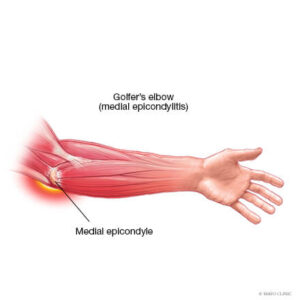 Similar to tennis elbow, the symptoms of golfer’s elbow develop gradually and may only occur following activity, but may eventually interfere with activity, as well as with daily activities such as picking up groceries or twisting door handles.
Similar to tennis elbow, the symptoms of golfer’s elbow develop gradually and may only occur following activity, but may eventually interfere with activity, as well as with daily activities such as picking up groceries or twisting door handles.
Common signs and symptoms of golfer’s elbow include:
- pain and tenderness on the inside of your elbow (the pain may extend into the forearm)
- stiffness on the inside of your elbow, especially in the morning or after the elbow has not moved for a period of time (the stiffness is usually most prominent when the elbow is fully straightened)
- Weakness of your grip (usually associated with pain)
The symptoms are often worsened with activities that require you to repetitively and forcefully bend and twist your wrist and grip objects like a golf club, tennis racquet, or hammer, usually in your dominant arm.
Golfer’s Elbow Causes
Golfer’s elbow is inflammation or, in some cases, microtearing of the tendons that join the forearm muscles to the inside of the elbow. The forearm muscles and tendons become damaged from overuse — repeating the same motions again and again. This leads to pain and tenderness on the inside of the elbow. In many cases, improper technique during lifting, throwing, and swinging can contribute to the increased stress. Poor conditioning, lack of flexibility, and inadequate warm-up prior to activity can also increase the risk of injury.
Who Gets Golfer’s Elbow?
- painters
- plumbers
- carpenters
- auto workers
- cooks
- butchers
- weight lifters
- nurses
- tennis and pickleball players
- throwing sport athletes (baseball)
Golfer’s Elbow Treatment Options
- soft tissue therapy
- exercises to strengthen the injured elbow tissues and restore posture via rib cage and shoulder biomechanics (see below)
- shock wave therapy sends sound waves to the elbow which promotes the body’s natural healing processes
- taping (see video below)
Posterior Impingement Syndrome
Elbow impingement is a condition characterized by compression and damage to soft tissue (such as cartilage) situated at the back of, or within the elbow joint.
The elbow joint primarily comprises of the articulation of two bones, the humerus (upper arm bone) and the ulna (inner forearm bone). Shock absorbing cartilage lies between these joint surfaces cushioning the impact of one bone on another.
Posterior Impingement Symptoms
Individuals with this condition typically experience pain at the back of the elbow that increases with forced hyperextension of the elbow. Pain may also increase on firmly touching the affected area. In those patients whose injury occurs from overuse, symptoms usually develop gradually and progressively over a period of time.
Common signs and symptoms of posterior impingement syndrome include:
- pain and tenderness on the back of your elbow
- swelling and/or stiffness on the back of your elbow, especially in the morning or after the elbow has not moved for a period of time (the stiffness is usually most prominent when the elbow is fully straightened)
- inability to full straighten elbow (almost always associated with stiffness & pain)
- as the condition progresses (particularly in the throwing athlete), pain may increase during activity and can eventually prevent activity performance
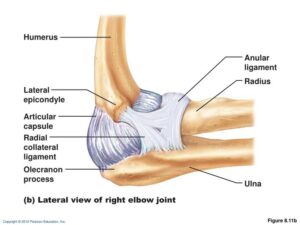 When the elbow is straightened fully, soft tissue is compressed at the back of the joint. If these compressive forces are excessive or too repetitive and beyond what the joint can withstand, damage and inflammation of the cartilage and/or soft tissue at the back of the elbow joint may occur. Occasionally, bony spurs may develop within the elbow joint contributing to the impingement.
When the elbow is straightened fully, soft tissue is compressed at the back of the joint. If these compressive forces are excessive or too repetitive and beyond what the joint can withstand, damage and inflammation of the cartilage and/or soft tissue at the back of the elbow joint may occur. Occasionally, bony spurs may develop within the elbow joint contributing to the impingement.
Posterior Impingement Causes
Elbow impingement typically occurs due to activities that excessively or repetitively straighten the elbow (hyperextension) often in combination with a lateral (valgus) force. This may occur suddenly, due to a specific incident involving a hyperextension force, or, more commonly, due to repetitive strain associated with overuse (such as repetitive throwing).
 In the throwing athlete, the “winding up” or “cocked” phase of the throwing motion (just prior to throwing) may hyperextend the elbow and place significant strain on the elbow joint. As a result, elbow impingement may occur due to overuse associated with repetitive throwing (especially in throwers who ‘open up too soon’ or throw with a low arm) and are particularly common in baseball pitchers and javelin throwers. Elbow impingement may also occur in martial arts due to repetitive punching, forcing the elbow into hyperextension.
In the throwing athlete, the “winding up” or “cocked” phase of the throwing motion (just prior to throwing) may hyperextend the elbow and place significant strain on the elbow joint. As a result, elbow impingement may occur due to overuse associated with repetitive throwing (especially in throwers who ‘open up too soon’ or throw with a low arm) and are particularly common in baseball pitchers and javelin throwers. Elbow impingement may also occur in martial arts due to repetitive punching, forcing the elbow into hyperextension.
Occasionally, elbow impingement is seen in contact sports and may occur due to a collision to the back of the elbow, forcing the elbow to hyperextend (such as another player falling across the back of the elbow).
Posterior Impingement Treatment Options
- soft tissue therapy
- exercises to strengthen the injured elbow tissues and restore posture via rib cage and shoulder biomechanics (see below)
- shock wave therapy sends sound waves to the elbow which promotes the body’s natural healing processes
- taping (see video below)
Rib Cage Position and Elbow Pain
At Back to Function, we make sure to evaluate the position of the rib cage when presented with a client with elbow pain. This is important because rib cage mechanics influence the position of the shoulder blade and arm, which affects elbow position. The position of the shoulder blade ultimately dictates the action of the rotator cuff and arm muscles which can create abnormal loads on the soft tissue structures that cross the elbow joint. This rib cage position and mechanics are related to the zone of apposition.
Zone of Apposition
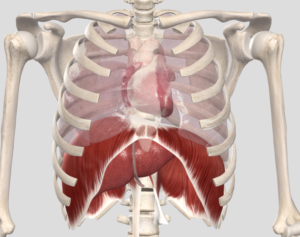
The diaphragm’s mechanical action and respiratory advantage depends on its relationship with the rib cage. The zone of apposition (ZOA) is the cylindrical aspect of the diaphragm that apposes the inner aspect of the lower chest wall. Individuals with elevated anterior ribs will have a decrease in their ZOA on one (usually the left) or on both sides. The abdominal wall muscles oppose the contraction of the diaphragm. The abdominal wall muscles (internal obliques and transverse abdominus) are responsible for diaphragm opposition upon contraction during inspiration, resulting in contralateral upper rib cage and apical chest expansion, especially during trunk rotation and gait (walking). An asymmetrical ZOA results in thoracic asymmetry and contributes to faulty rib cage mechanics which can result in elbow pain.
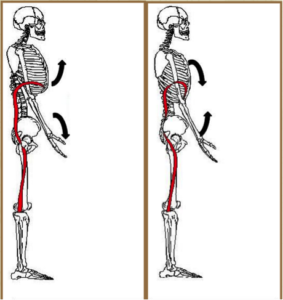
3 Things That Prevent Optimal ZOA
- Hyperinflation: This is unexaled air that creates a restrictive barrier that individuals cannot move efficiently through. The most common hyperinflation zone is the left chest wall in a right brachial chain patterned individual.
- Hypertonic chains of muscle: the left anterior interior chain and subsequent right brachial chain patterned individual are common postural dysfunctions.
- Poor perception of yourself, your own internal space, the ground and the space around you (esthesiology).
BTF Postural Evaluation
When evaluating a client with elbow pain, the typical pattern we see is a right oriented pelvis with a compensatory trunk rotation to the left which results in the left ribs being externally rotated and the right ribs internally rotated. This has a tendency to direct the right shoulder blade into a protracted position (winging scapula). This altered position of the shoulder blade can lead to tension of the anterior shoulder structures (biceps and pectoralis minor) and weakness of the posterior structures (triceps, lower trapezius, rhomboids and serratus anterior).
At Back to Function we use our unique functional screen to determine if your elbow pain is being caused by these mechanical issues related to rib cage and shoulder blade position. Once we determine the cause of your elbow pain, we provide treatment that incorporates soft tissue therapy that helps inhibit overactive muscles that are contributing to faulty position. It is also important to establish optimal pelvis, rib cage and shoulder blade position.
Here are some examples of re-positioning exercises that we use at Back to Function to help alleviate elbow overuse injuries:
As with any fitness program, you should check with your healthcare provider before trying any of these exercises. If you need help with an elbow overuse injury, or would like to prevent an injury and improve your fitness, please give us a call at 310-534-1900 or email us at info@backtofunction.com.
References:
Orthoinfo. Tennis Elbow (Lateral Epicondylitis).
Mayo Clinic Orthopedics & Sports Medicine. Golfer’s Elbow
Elbow Impingement – Posterior Impingement Syndrome – PhysioAdvisor


